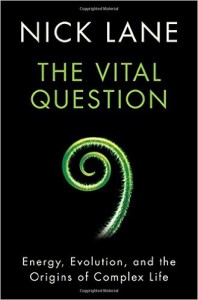
"There is a Black Hole in the Middle of Evolutionary Biology"

I finished reading Nick Lane’s “The Vital Question: Energy, Evolution, and the Origins of Complex Life”. It is a great book, but I encourage readers to first start with the paper “Early bioenergetic evolution by Filipa L. Sousa et al.”.
Nick Lane works on origin of life in collaboration with Bill Martin. In the first chapter of the book, he mentioned about a ‘black hole’ in evolutionary theory. What is this black hole? It is that nobody knows how eukaryotes evolved from prokaryotes. Evolutionary biologists seemed to have many explanations including gradual evolution, serial endosymbiosis, etc., but none of them was supported by genome sequencing. In the meanwhile, most scientists moved on assuming that the evolutionary origin of eukaryotes had been explained.
Removing such a ‘black hole’ in fundamental understanding is not only needed to satisfy scientific curiosity, but is also important for practical reasons. Many human genes are shared by a large number of eukaryotes and were therefore present in the last eukaryotic common ancestor. How can anyone think about tweaking those genes to cure diseases, if they do not know why they were there in the first place?
In his book, Lane expands on his work with Bill Martin that energy is the major factor in the evolution of eukaryotes (“Hydrogen hypothesis”). In this scenario, eukaryotic cells evolved through sudden jump, when a bacterial cell entered the cell of a methanogenic archaea as mitochondria and became its source of energy. That is only a part of the book however, and in the rest, he provides explanations of the other unanswered questions on origin of life (check his “Life Ascending: The Ten Great Inventions of Evolution”) based on energy considerations. In this scenario, life originated in the thermal vents and energy was the major factor in that process. He wrote about the chemiosmotic theory of Peter D. Mitchell and explained how the thermal vents were natural places for such process to originate and evolve.
If the first few chapters do not convince you to visit a thermal vent during the next summer vacation, the last chapter definitely will. In it, he showed electron microscope images of a strange creature discovered in a thermal vent near Japan. The 2012 paper by Yamaguchi et al. was titled - ‘Prokaryote or eukaryote? A unique microorganism from the deep sea’ and it indeed delivered what it promised in the title.
There are only two kinds of organisms on the Earth: prokaryotes and eukaryotes. Although eukaryotes are considered to have evolved from
prokaryotes, there were no previously known intermediate forms between them. The differences in their cellular structures are so vast that the problem of how eukaryotes could have evolved from prokaryotes is one of the greatest enigmas in biology. Here, we report a unique organism with cellular structures appearing to have intermediate features between prokaryotes and eukaryotes, which was discovered in the deep sea off the coast of Japan using electron microscopy and structome analysis. The organism was 10 ?m long and 3 ?m in diameter, having >100 times the volume of Escherichia coli. It had a large nucleoid, consisting of naked DNA fibers, with a single nucleoid membrane and endosymbionts that resemble bacteria, but no mitochondria. Because this organism appears to be a life form distinct from both prokaryotes and eukaryotes but similar to eukaryotes, we named this unique microorganism the Myojin parakaryote with the scientific name of Parakaryon myojinensis (next to (eu)karyote from Myojin) after the discovery location and its intermediate morphology. The existence of this organism is an indication of a potential evolutionary path between prokaryotes and eukaryotes.
Overall a great book and well worth reading.